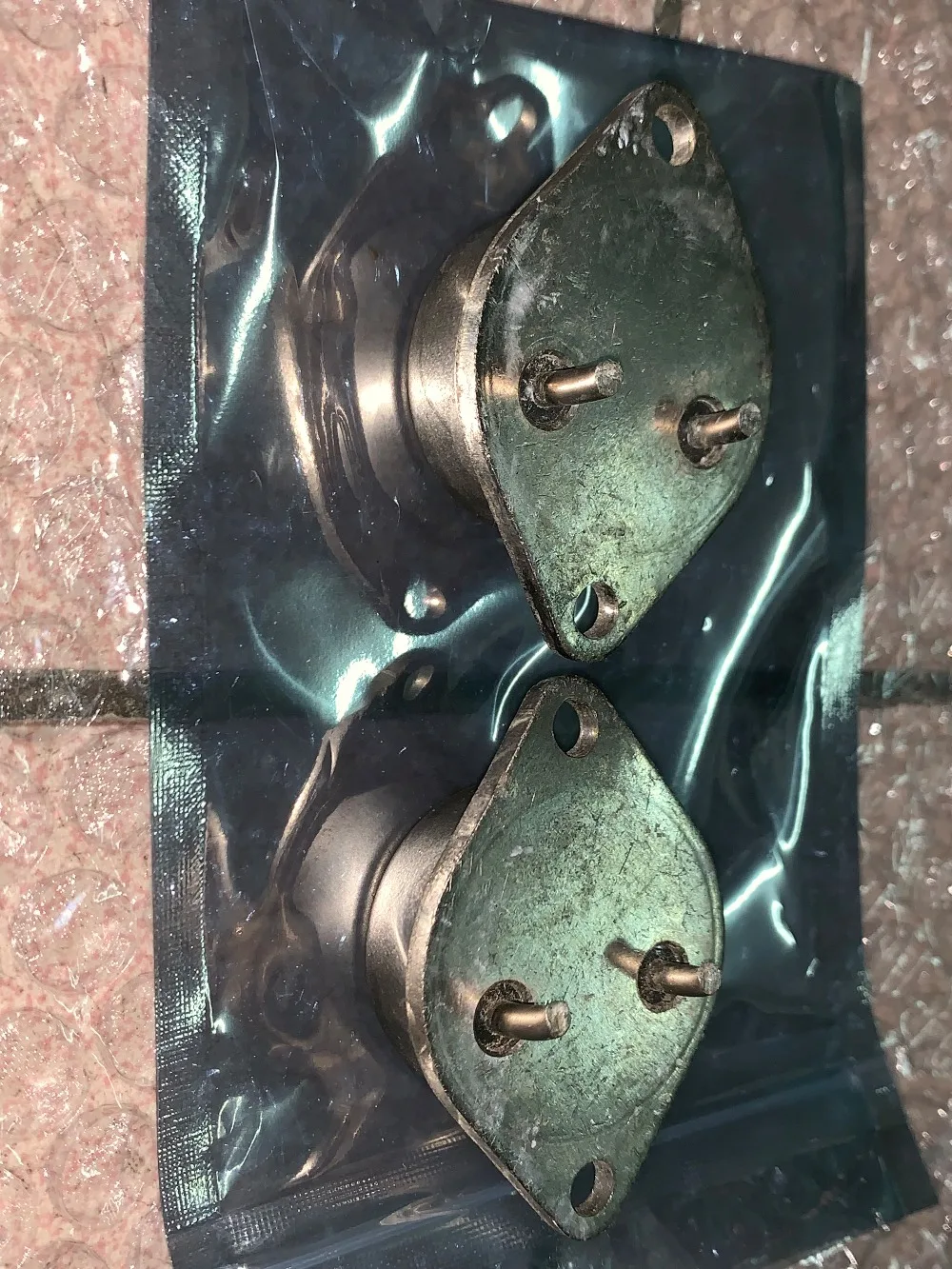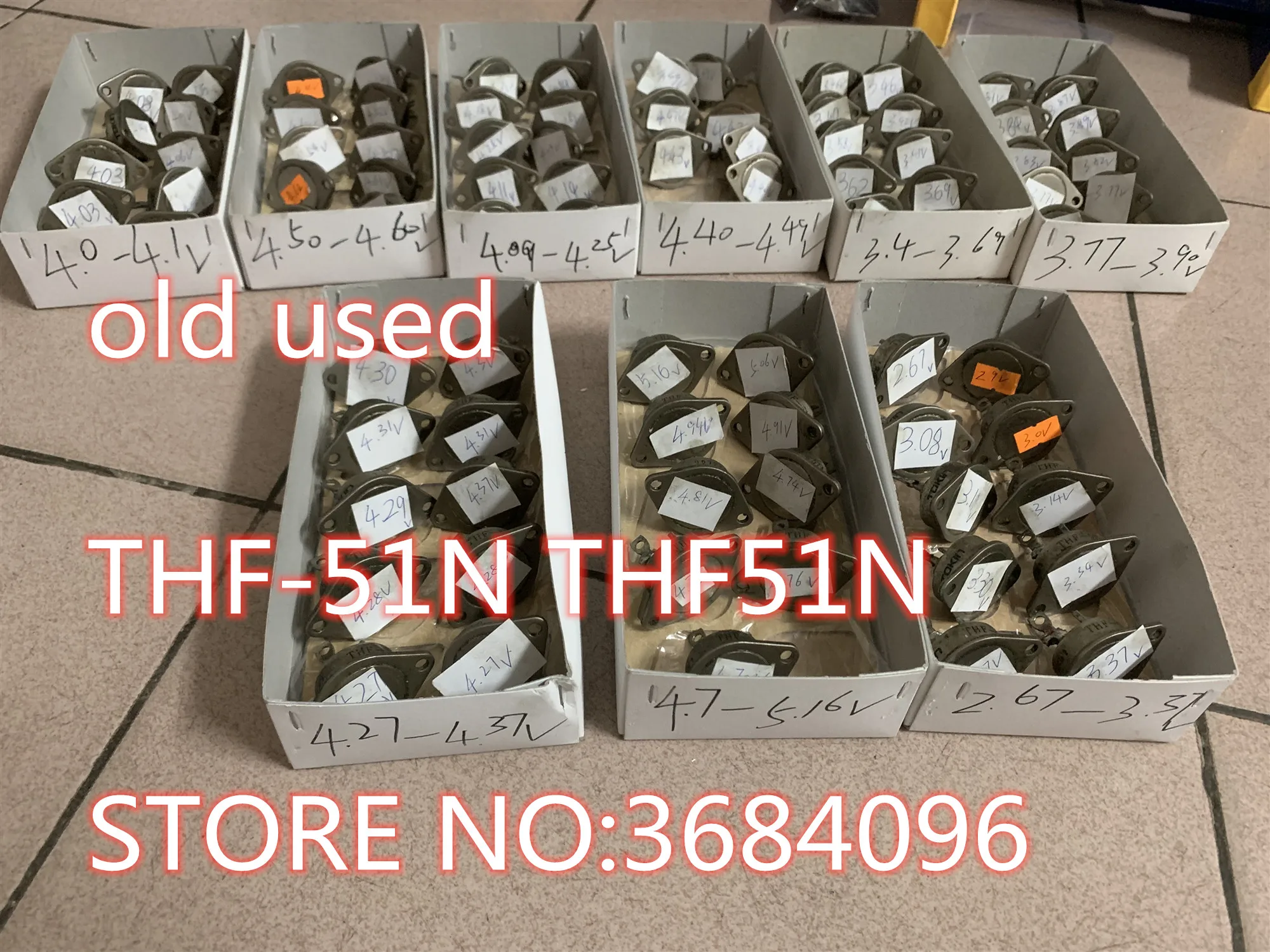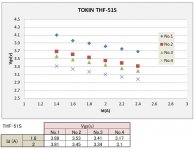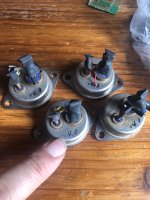All tests are completed, please see the picture
THF-51N TOKIN and 2PCS 2SK180(The length of the foot is only half. The friends who need it can send e-mails, only 2 of them are normal
No impact on work)








THF-51N TOKIN and 2PCS 2SK180(The length of the foot is only half. The friends who need it can send e-mails, only 2 of them are normal
No impact on work)








I found that thf-51n can accept high fever when it works and when the radiator is very hot, including 51N
For example: he can keep at 3.58v for a long time when he is at 2V
For example: he can keep at 3.58v for a long time when he is at 2V
Because this is used, the appearance is a bit dirty, please do n’t mind, because this is a normal functioning transistor
I can clean it for everyone, wipe off the oily surface, wipe it with a towel
I can clean it for everyone, wipe off the oily surface, wipe it with a towel
One channel was 3.33V and the other 3.26V paired with Mosfet VGS of 4.40V for both channels.
tnx!
The good news,
when opening a box of 2SK182ES tonight,
when preparing to measure 2SK182ES,Found 2 boxes of THF-51S,
those who need THF-51S,NEW can leave a message,
I have not paired yet
I need to pair again when needed
when opening a box of 2SK182ES tonight,
when preparing to measure 2SK182ES,Found 2 boxes of THF-51S,
those who need THF-51S,NEW can leave a message,
I have not paired yet
I need to pair again when needed
As I am (re)new to this, trying to remember all I learned 38 years ago, is the 3.5-4.5Vgs that Pras110 has usable in SissySit? The THF-51N or S? Any preference to S or N?
thx
PS yes, just getting around to reading all 93 ages and the tips n tricks threads but want to get some FETS coming so I have a clear direction of which way to go.
thx
PS yes, just getting around to reading all 93 ages and the tips n tricks threads but want to get some FETS coming so I have a clear direction of which way to go.
say that , for existing (2) version(s) , Ugs in range of whatever (negative) close to 0 to (negative) 3V7 is going to work , considering usual (negative) 4V5 of IRFP9140 , for given operating point ( Iq 1A8 , 22V5 rails) ........ are usable in SissySIT arrangement
considering that Pras said he's going to send me some with higher Ugs ( more than negative 4V) I'll try to find adequate solution for using them in SissySIT , and - if I see 2SK183 in envelope , will try that one too, both in Sissy and in Singing Bush
regarding S or N or T - weh couldn't find any usable explanation what suffix means; for now, those with suffix S are confirmed as good ones , while N and T - heaven knows ...... logic sez it's most likely irrelevant , but I should say that only after test
considering that Pras said he's going to send me some with higher Ugs ( more than negative 4V) I'll try to find adequate solution for using them in SissySIT , and - if I see 2SK183 in envelope , will try that one too, both in Sissy and in Singing Bush
regarding S or N or T - weh couldn't find any usable explanation what suffix means; for now, those with suffix S are confirmed as good ones , while N and T - heaven knows ...... logic sez it's most likely irrelevant , but I should say that only after test
You want at least 300mV difference in Vgs (or Ugs as ZM likes to write) between your fets and sits so if 3.5-4.5V is the available range, aim for the low end of that (3.5V).
I have built 2 using the THF-51S and have 'a few' 2SK182ES in a range of voltages for when I grow up and become smart and brave enough to build a DEF.
ZM has a new board revision with a darlington optocoupler that can not be used to build M25. The old revision can be used for M25 but if your SITS are badly behaved (leaky gates) you will want the new revision.
I have built 2 using the THF-51S and have 'a few' 2SK182ES in a range of voltages for when I grow up and become smart and brave enough to build a DEF.
ZM has a new board revision with a darlington optocoupler that can not be used to build M25. The old revision can be used for M25 but if your SITS are badly behaved (leaky gates) you will want the new revision.
I recently got interested in VFET / SIT and bought 4 THF-51S at a local shop.
To make sure they work properly, I measured by the post#81 method.
Attached is the measurement result.
Question
I measured Vgs while changing Id quickly.
It takes less than 1 minute per one to measure and change 6 conditions of Id.
The SIT is fixed on a heatsink(200x200x70mm) and has no temperature rise during the measurement.
Post #81 directs heatsink to be fan cooled, but I didn't feel the need for fan cooling.
Is there something wrong with the measurement?
Should I wait till it get hot?
Thank you.
To make sure they work properly, I measured by the post#81 method.
Attached is the measurement result.
Question
I measured Vgs while changing Id quickly.
It takes less than 1 minute per one to measure and change 6 conditions of Id.
The SIT is fixed on a heatsink(200x200x70mm) and has no temperature rise during the measurement.
Post #81 directs heatsink to be fan cooled, but I didn't feel the need for fan cooling.
Is there something wrong with the measurement?
Should I wait till it get hot?
Thank you.
Attachments
who knows and who cares
it certainly isn't Ugs ......... at least not for 1A8-2A range, with 24-ish rail
it certainly isn't Ugs ......... at least not for 1A8-2A range, with 24-ish rail
These numbers are marked for different purposes
In the early days, these were Japanese military products, high-frequency military products
They are not used for audio
Mark these marks, only used in Japanese military machinery
In the early days, these were Japanese military products, high-frequency military products
They are not used for audio
Mark these marks, only used in Japanese military machinery
I finally heard sample of SissySit. Never heard SIT3, though I wanted to.
Full range panel@4ohms 88db efficiency, Tokin 182 variant of SissySit.
Plays as loud as I can stand with integrity.
I wold describe my (non SissySit) Pass DIY VFET Sony as follows: VFET traits, wonderful amp: absolute separation of instruments, every instrument and voice can be heard distinctly. Big deep and wide 3D soundstage w. holography. Tonality is brief, but sweet and deep. Other types of transistor amps don’t go sweet and deep on the tone like that. Perhaps a bit of platinum spotlighting of the the voices and instruments. Extremely clean but still toneful amp.
SissySit has the above as well. How different? A bit warmer than platinum. SissySit preserves a single ended ethos, in spite of DEF push pull topology. By that, it has single ended fluidity and open dynamics in the midrange and upper midrange. SissySit holds on to the tone longer than Pass Sony VFET, swirls its skirts a bit more. This makes for wonderful transitions in the upper bass and lower midrange. It is more fleshed out. It’s like what I remember of SIT 1 and SIT 2 from audio shows, but with extra richness. This SissySit doesn’t induce fatigue at all. It is hypnotic and relaxing.
I do like it better than Pass Sony DIY, but such decisions could be speaker dependent and whether you like absolute cleanliness versus more tone.
My experience has been that maybe two thirds of audiophiles are detail oriented and want extreme detail at any cost to other parameters. The other third are ‘tone’ audiophiles, and want the best tone, flesh and blood. I am in the latter group, so I like SissySit a lot, it’s the best so far on the SIT/VFET front.
That being said, I could live any SIT/VFET variant and not feel deprived.
Full range panel@4ohms 88db efficiency, Tokin 182 variant of SissySit.
Plays as loud as I can stand with integrity.
I wold describe my (non SissySit) Pass DIY VFET Sony as follows: VFET traits, wonderful amp: absolute separation of instruments, every instrument and voice can be heard distinctly. Big deep and wide 3D soundstage w. holography. Tonality is brief, but sweet and deep. Other types of transistor amps don’t go sweet and deep on the tone like that. Perhaps a bit of platinum spotlighting of the the voices and instruments. Extremely clean but still toneful amp.
SissySit has the above as well. How different? A bit warmer than platinum. SissySit preserves a single ended ethos, in spite of DEF push pull topology. By that, it has single ended fluidity and open dynamics in the midrange and upper midrange. SissySit holds on to the tone longer than Pass Sony VFET, swirls its skirts a bit more. This makes for wonderful transitions in the upper bass and lower midrange. It is more fleshed out. It’s like what I remember of SIT 1 and SIT 2 from audio shows, but with extra richness. This SissySit doesn’t induce fatigue at all. It is hypnotic and relaxing.
I do like it better than Pass Sony DIY, but such decisions could be speaker dependent and whether you like absolute cleanliness versus more tone.
My experience has been that maybe two thirds of audiophiles are detail oriented and want extreme detail at any cost to other parameters. The other third are ‘tone’ audiophiles, and want the best tone, flesh and blood. I am in the latter group, so I like SissySit a lot, it’s the best so far on the SIT/VFET front.
That being said, I could live any SIT/VFET variant and not feel deprived.
- Home
- Amplifiers
- Pass Labs
- SissySIT



